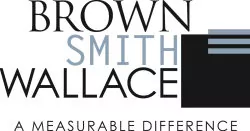Controlling rapidly rising health care costs can be a struggle in any economy, but there are several options, including self-insuring, that can help keep premium costs down.
According to the Employee Benefit Research Institute, 58.5 percent of workers with health coverage were in self-insured plans in 2011. In these plans, the employer is its own insurer instead of purchasing health insurance from an insurance company.
Self-insured plans often have a contract with a Third Party Administrator (TPA), which administers the plan, while the employer bears the risk associated with offering the health benefits. Stop Loss Insurance is typically purchased by the employers to protect them from very large claims.
Reducing self-insurance costs
Some months ago, management of a self-insured independent, full-service hospital suspected they were paying too much for medical insurance. As a self-funded entity, the hospital had to develop rates to determine what to charge itself. A Brown Smith Wallace insurance advisory consultant reviewed the hospital's rates and noticed something was wrong — they were paying twice as much as normal.
The hospital was paying more than $3 million for coverage, and its stop-loss cost was two to three times what it should have been. By moving the hospital to a better health care insurance provider, Brown Smith Wallace saved it $800,000 on its new insurance package.
Other options for reducing health care costs
Most companies don't review their medical benefit plans often enough. Challenge your provider to give you the best price available, and find out what your company can do to qualify for available discounts. If your business is currently self-insured, consider increasing your stop-loss point and reducing your premium.
Other options to help reduce costs include:
- Conduct a claims audit: You could be overpaying. Make sure your insurer is paying your claims accurately and that you are only paying for those claims eligible for benefits. An independent consultant can review your benefit program and give you options to reduce your costs.
- Start a captive insurance company: Rising health insurance costs make captive insurance companies a great option to help control those costs. Captive insurance companies provide a formal method to reinsure, or to develop a fund to reduce your reliance on private insurance. Recent developments have made this option more accessible for smaller to mid-sized companies.
To learn more about cost-saving opportunities with health care insurance, visit bswllc.com, or contact Bill Goddard, Principal, Insurance Advisory Services, at 314.983.1253 or bgoddard@bswllc.com.
The content of this article is intended to provide a general guide to the subject matter. Specialist advice should be sought about your specific circumstances.

